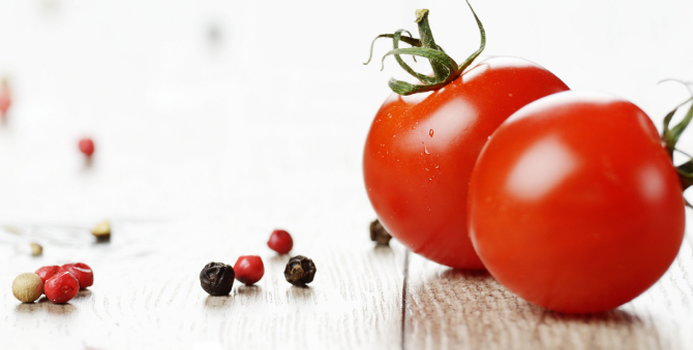Lycopene is a carotenoid and phytonutrient found in red fruits and vegetables such as tomatoes, pink grapefruits, watermelons and papayas. It is the compound that is responsible for the red color in these foods. Numerous studies have shown that ingesting lycopene-rich foods can result in positive health benefits.
Lycopene is a powerful antioxidant that can help protect against degenerative diseases. It does this by neutralizing free radicals in the body. Lycopene may help prevent DNA damage in the cells and help the cells to function better. High levels of lycopene, in the blood and fatty tissues, correlate with reduced risk of cancer, heart disease and macular degeneration. The human body cannot produce lycopene so it must be obtained from food sources.
Health Benefits
A study on heart disease found that men with high levels of lycopene in their fatty tissues had a 50 percent reduced risk of heart disease.
Another study found that men who ate tomato products more than twice per week had a 21 to 34 percent reduced risk of prostate cancer. Those who ate 10 servings or more per week decreased their risk by 45 percent.
Women with high levels of lycopene have a 5 times lower rate of cervical cancer than those with the lowest levels.
Lycopene has also been shown to have a protective effect against stomach, colon, lung and skin cancers. It reduces the risk of arteriosclerosis by inhibiting platelet aggregation and reducing inflammation and helps to protect the skin from damage resulting from UV sun exposure. It is a common ingredient in anti-aging creams and lotions. Lycopene degrades easily so it's important to keep the conainer properly sealed between uses.
One study found that when people ingest tomato products on a daily basis, they show a 30 percent increase of the ability of their skin to withstand UV radiation damage from sun exposure.
Best Sources of Lycopene
Most people get the majority of lycopene in their diet from tomato products. Processed tomato products have higher levels of lycopene than raw tomatoes. This is because the cooking process breaks down the cell walls of the tomato which makes the lycopene more available. As an example, one ripe tomato contains 3.7 milligrams of lycopene, where as one cup of tomato soup contains almost 25 milligrams of lycopene. Eating tomato products with oil helps the lycopene to be more readily absorbed by the body. Topping a tomato salad with a little olive oil will dramatically increase the body's ability to absorb and utilize the lycopene.
Lycopene can also be obtained in supplement form. It's usually sold as tablets or capsules. Sometimes other nutrients are added to the formula for additional antioxidant benefits. Maximum dose limits haven't been established. Though, there are no reported incidences of toxicity from taking too much lycopene.
Caution
Antioxidant supplements like lycopene may interfere with radiation and chemotherapy treatments. Though, food sources are thought to be safe.



